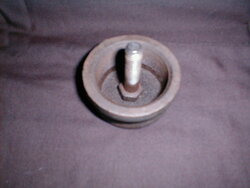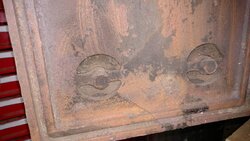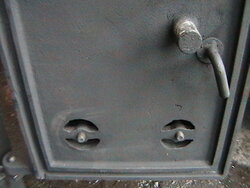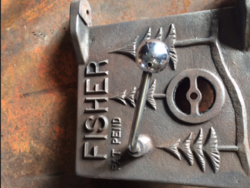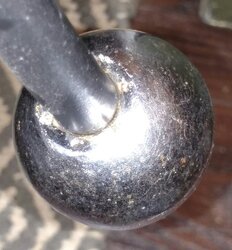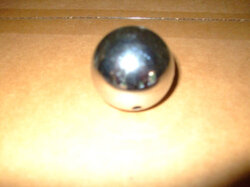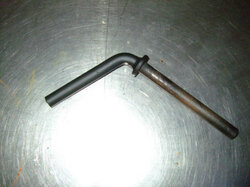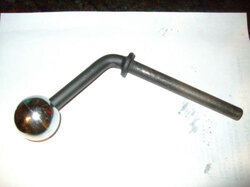The door is the original cast iron door without the trees. I searched and read countless threads on the forum. From my research I have learned that the chrome ball handle was 1 3/4" diameter. The pipe cap dampers were 2" diameter, with a 1/2" bolt plug-welded to the cap. How big was the hole that was drilled in the center of the pipe caps prior to welding the bolt in place? How long were the bolts? Is there a source that sells the 1.75" chrome balls for the handles? I quoted this older post from coaly as a reference. I'm asking questions now, in case I find an old stove to restore to original specs and appearance.
The first post of this thread shows the early doors and draft caps.
The first stoves had steel plate doors, then a cast iron door was suggested by Bob's father Baxter. A few cracked between the air intake holes and the trees were added to make the door thicker. This is an early three piece top before the tops were bent from one piece. The draft caps were pipe caps with a half inch bolt "plug" welded in the center. The draft caps with fins were invented by Bob's father, Baxter as well.
For a time line on the stoves development you can read The Fisher Stove Story here; Click on attachments tab for PDF of the scanned book
https://www.hearth.com/talk/wiki/bob-fisher/
Original draft caps;
View attachment 137836 View attachment 137837 The pipe cap was drilled in the center and welded through the hole to the top of bolt head.
First style cast door; (and also the door style pictured on the Fisher Stove Story cover)
Notice bent handle and solid chrome ball as well.
View attachment 137838 Notice top plate detail welded with 3 pieces.


